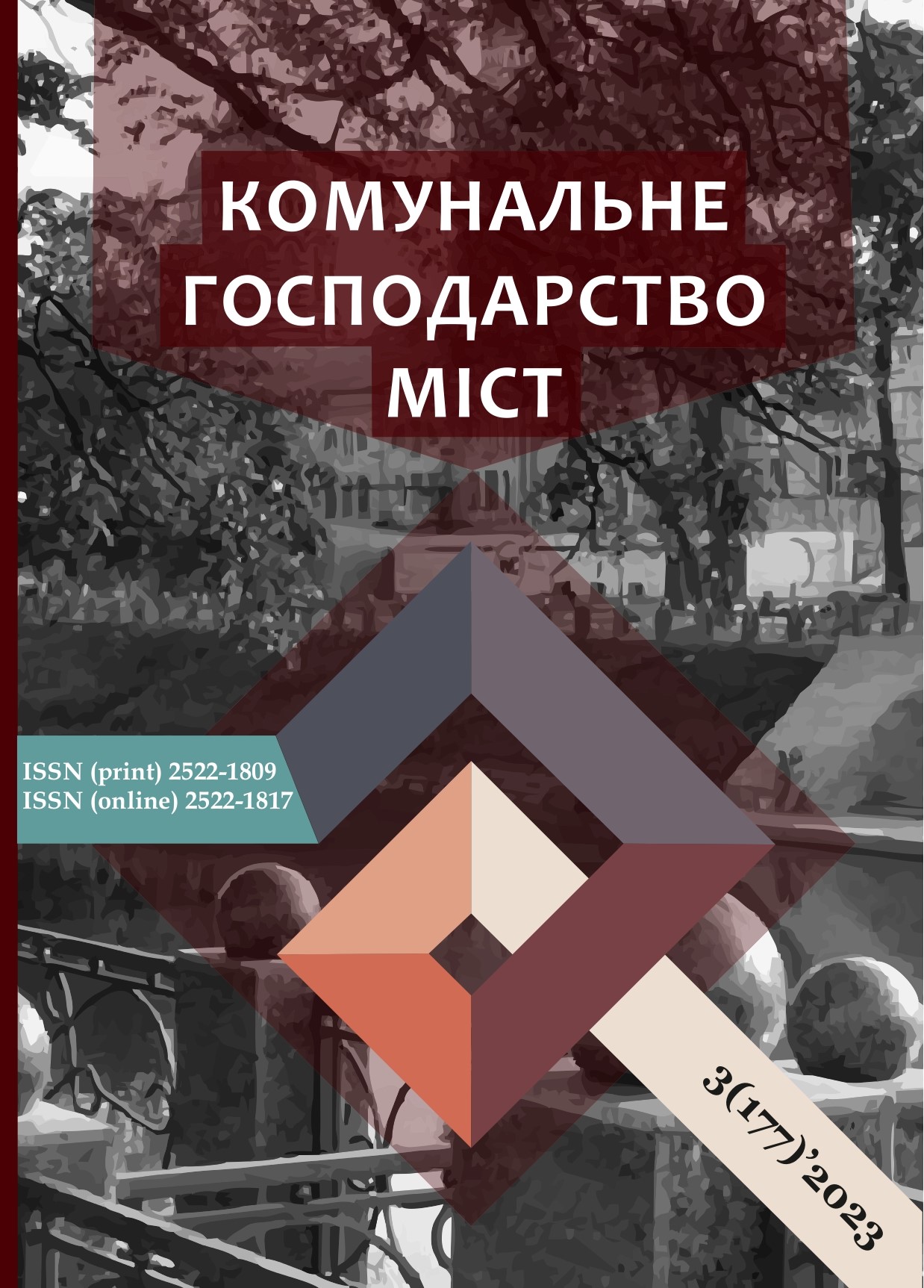INSTRUMENTAL METHODS OF MONITORING CITY LANDS
DOI:
https://doi.org/10.33042/2522-1809-2023-3-177-98-103Keywords:
instrumental land monitoring, geoinformation system, automation, camera work, monitoring principles, land monitoring data, geospatial analysis, land plotAbstract
Urban land monitoring is an important component of effective land management. Instrumental monitoring of urban land is necessary for the collection and analysis of data on land plots, which allows for effective management of urban land, planning of city development, and environmental safety. One of the main tools for city land monitoring is geoinformation systems. Remote sensing of the Earth, navigation and positioning systems, land resource databases are another tool for monitoring urban land. These databases are the basis for monitoring urban land and are used to make decisions on planning and management of land resources.
For the effective use of instrumental support for city land monitoring, appropriate qualifications of specialists and engineers who will be engaged in data collection and analysis are required. It is also important to have sufficient resources and funding for tool development and implementation.
The purpose of the article is to research modern approaches, methods and principles of instrumental monitoring of urban lands. The study presents methods and technologies of instrumental monitoring of urban lands. The areas of instrumental provision for monitoring the land of cities have been analyzed.
Monitoring urban land is a very important task that has a significant impact on our planet and our shared future. To do this, it is important to have access to accurate and objective statistical data that will allow for proper planning and control of the use of land resources in cities.
According to the research results, it was found that the instrumental methods of city monitoring are an important tool for ensuring the sustainable development of cities and improving the quality of life of residents. They allow collecting accurate and objective data on the state of urban areas and using them for planning the development of cities and managing urban infrastructure.
It has been proven that the instrumental methods of city monitoring should be used in combination with other methods and approaches to ensure a comprehensive and multifaceted analysis of the state of cities and their development.
References
Climate Change Vulnerabilty (2018). Philippines Ranks 3rd. PhilStar Global. March 21. Retrieved from: https://www.philstar.com/headlines/2018/03/21/1798866/climate-change-vulnerability-philippines-ranks-3rd
Ranada, P. (2014). PH named country most affected by climate change in 2013. Rappler. December 3. Retrieved from: https://www.rappler.com/science-nature/environment/76868-philippines-tops-global-climate-risk-index
Hoffmann, R., Raya M. (2017). Learn from the Past, Prepare for the Future: Impacts of Education and Experience on Disaster Preparedness in the Philippines and Thailand. World Development, V. 96, Р. 32–51. https://doi.org/10.1016/j.worlddev.2017.02.016
Larsson, G. (1991). Land registration and Cadastral Systems: tools for land information and management. Esex: Longman Scientific and Technical, 387.
Petrakovska O., Lizunova A. (2009). Urban planning in private property conditions in Ukraine. International Academic Group On Planning, Law And Property Rights. Third Conference. Aalborg, Denmark.
Tregub M., Trehub Y. (2015) Substantiation of land management methods of industrial cities Theoretical and Practical Solutions of Mineral Resource Mining. Taylor & Francis Group, London. P. 449-452.
Mingming W., Nesterenko S., Shterndok E. (2019). Modelling of the Parcel Pattern Impact. International science and technology conference "Earth science". IOP Conf. Series: Earth and Environmental Science, 272. doi:10.1088/1755-1315/272/3/032085
Nesterenko, S., Mishchenko, R., Shchepak, V., Shariy, G. (2020). Public Cadastral Maps as a Basis for a Construction of the Building General Layout. Proceedings of the 2nd International Conference on Building Innovations. ICBI 2019. Lecture Notes in Civil Engineering, vol 73. Springer, Cham, 161-170.
Bagarinao (2016). Households' Natural Disaster Preparedness. A View from a Second Class Municipality in a Developing Country Environment Asia. Vol 9( 2) Р. 158–164.
Downloads
Published
How to Cite
Issue
Section
License
The authors who publish in this collection agree with the following terms:
• The authors reserve the right to authorship of their work and give the magazine the right to first publish this work under the terms of license CC BY-NC-ND 4.0 (with the Designation of Authorship - Non-Commercial - Without Derivatives 4.0 International), which allows others to freely distribute the published work with a mandatory reference to the authors of the original work and the first publication of the work in this magazine.
• Authors have the right to make independent extra-exclusive work agreements in the form in which they were published by this magazine (for example, posting work in an electronic repository of an institution or publishing as part of a monograph), provided that the link to the first publication of the work in this journal is maintained. .
• Journal policy allows and encourages the publication of manuscripts on the Internet (for example, in institutions' repositories or on personal websites), both before the publication of this manuscript and during its editorial work, as it contributes to the emergence of productive scientific discussion and positively affects the efficiency and dynamics of the citation of the published work (see The Effect of Open Access).

